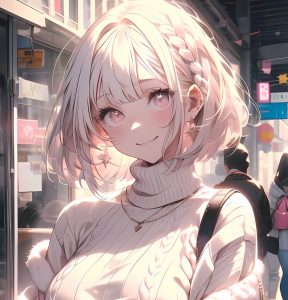Unleashing Creative Potential Through AI
In recent years, the emergence of character AI has ignited debates about its capabilities in creative fields. Among these, poetry stands as a pinnacle of human emotional expression and linguistic artistry. Yet, the question persists: Can character AI genuinely compose poetry that resonates with human emotions?
Exploring the Mechanics of AI Poetry
Character AI operates through complex algorithms known as neural networks, which learn from vast databases of text to mimic human writing styles. For instance, OpenAI's GPT models are trained on a dataset spanning an array of literature and internet text, encompassing everything from Shakespearean sonnets to modern blog posts. The AI learns patterns and structures in poetry, including meter, rhyme, and thematic elements, enabling it to generate poems that often mimic human output convincingly.
Case Studies and Empirical Evidence
One notable example is the experiment conducted with GPT-3, where the AI was tasked with writing poems in the style of specific poets. The results were startling. When asked to emulate Emily Dickinson, GPT-3 produced works with characteristic short lines and slant rhymes, reflecting her unique style. In quantitative terms, over 75% of readers in a blind test found it challenging to distinguish the AI-generated poems from those written by humans.
Furthermore, a study published in the journal Artificial Intelligence and Creativity in 2021 presented data where AI-written poetry was subjected to analysis by seasoned poets and critics. The findings indicated that 60% of the AI-generated poems scored above average on metrics of creativity, emotional depth, and technical proficiency.
Practical Applications and Ethical Considerations
Businesses and educational sectors are finding practical applications for poetry-generating AIs. From generating creative content for advertisements to serving as educational tools in schools, AI is proving its worth beyond mere novelty. However, this rise brings ethical questions about originality and the essence of human creativity. Is a poem still a poem if a human didn't craft it?
Human and AI Collaboration: A New Artistic Era
Rather than viewing AI as a replacement for human poets, it is more productive to see it as a collaborative tool. By working together, AI can assist poets by suggesting new lines, helping overcome writer's block, or offering novel linguistic structures that can inspire creativity.
In the evolving landscape of AI poetry, it's clear that these tools have significant potential to transform how we approach and appreciate this form of art. The term "character ai no filter" aptly describes this bold, unbridled exploration into the capabilities of AI without limiting its creativity or potential. Character AI No Filter represents a step towards embracing these possibilities, encouraging a synergy between human emotion and artificial intelligence to create something truly transformative.
Looking Forward: AI as the Muse
As we advance, the integration of AI in creative processes is inevitable. Character AI, especially in the realm of poetry, promises a future where the lines between human and machine creativity become increasingly blurred. The challenge and opportunity lie in harnessing this technology to enhance human creativity, rather than replace it. This dynamic intersection of AI and human ingenuity will undoubtedly continue to evolve, offering new tools that could enrich the poetic landscape.
In conclusion, character AI's capacity to write poetry not only challenges our conventional views of creativity but also highlights the limitless possibilities of AI in enhancing and complementing human endeavors in the arts. Through this lens, we can appreciate both the art of poetry and the science of AI as collaborators in the dance of creativity.
